Lifestyle
NFL draft suits give prospects another way to cash in on their fame, flash their style on red carpet
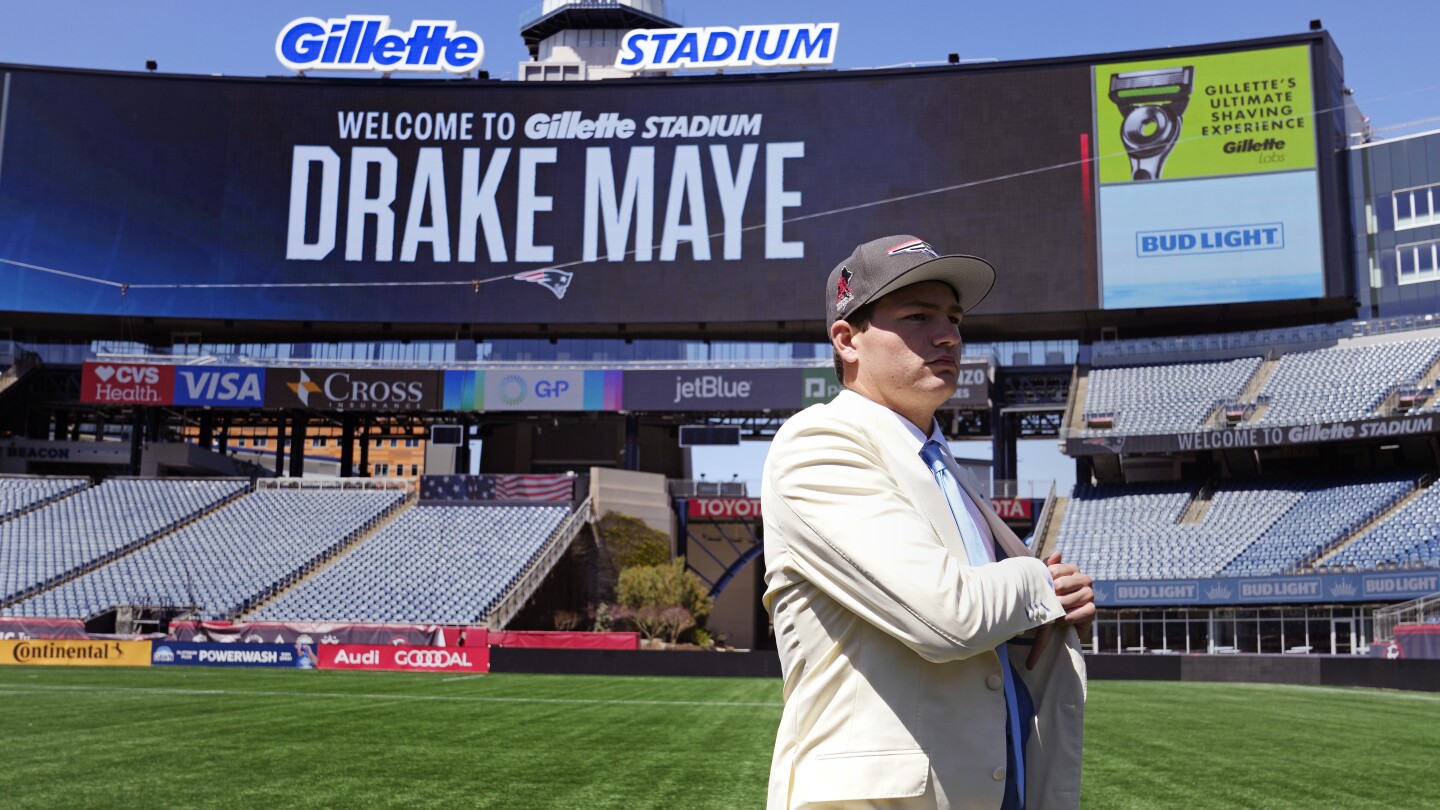
DETROIT (AP) — Drake Maye planned to wear a custom suit for the NFL draft.
Hugo Boss gave the former North Carolina quarterback an offer he couldn’t refuse.
The clothing company, based in Germany and famed for its stylish fashion, paid Maye last year to make a late switch and wear one of its gray suits.
Maye accepted the inducement, walking the red carpet in Detroit in a simple Hugo Boss jacket and trousers. He saved his fancy threads for the next day.
When Maye walked off a private plane and was whisked away for his introductory news conference as the New England Patriots’ No. 3 pick overall, he was sporting the light khaki suit with Carolina blue embellishments that was designed and crafted for him to show off the previous night.
Pantheon Limited founder Ethan Weisman and Baynes + Baker co-founder Ravi Punn teamed up to put Maye in the suit he ended up wearing in Foxborough, Massachusetts, the day after the draft.
“Sometime players get six figures to wear a suit because the NFL draft is like the Oscars of sports,” Punn said in an interview with The Associated Press. “The suits are seen for a few hours before the draft, during the draft, the next day when outfits are getting graded — and forever online with social media.”

A year later, Weisman simply shrugged his shoulders over Maye’s audible in the Motor City.
“There were no hard feelings because agents are simply doing their job when they’re trying to work deals for their clients,” Weisman told the AP. “And, there were a lot of pictures of him in our suit.”
Weisman expects some first-round picks to wear his suits Thursday night in Green Bay, several more while they watch the draft from home and even a few broadcasters, including ESPN’s Mike Greenberg.
He has learned, however, not to celebrate too early.
“Green Bay is a pain to get to and I would love to not go there, but you have to build the relationship and make sure no one else is going to steal them,” Weisman said in a telephone interview earlier this week. “In the back of my mind I know anything can happen, so I won’t know for sure what they’re wearing until they are on the red carpet.
“I’m also going to bring extra suits just in case I run into a player and show him something that he thinks looks cooler than his own suit.”
Punn said Hugo Boss is “at the top of food chain,” in the competition among clothiers to entice first-round prospects to wear their suits.
“They pay a lot for that and small shops can’t and I don’t blame the players or the agents for taking advantage of that,” said Punn, who has made suits for NFL draft prospects since 2018. “If someone is paying you and your job is to help your client make money, you do that deal.”
Punn, who had some promising leads with prospects that didn’t pan out this year, expects Texas A&M edge rusher Shemar Stewart to wear one of his suits that includes a jacket with photos he provided on the lining.
Weisman has not paid NFL draft prospects to wear his suits over the last decade, but does give them one for free to wear on their big night to help build his brand and to potentially cultivate a long-term relationship with clients who may want to buy more for up to $5,000 each.
Country music star Jelly Roll recently rocked one of Weisman’s custom-made suits at the “Saturday Night Live” 50th anniversary celebration with nearly 15 million viewers. Ezekiel Elliott took one of Weisman’s ideas and ran with it, unforgettably appearing in a crop top that exposed his stomach on the red carpet in 2026 before Dallas drafted the former Ohio State running back.
State and Liberty, a clothing company created for customers with an athletic build, got into the pay-to-play game at the NFL draft for the first time this year to help seal the deal with Penn State tight end Tyler Warren.
“We had a lot of agents reach out to us with really big offers and we passed on a lot of them,” State and Liberty co-founder Lee Moffie told the AP. “We made the decision that it’s not worth paying six figures — or even $50,000 — just to get a couple pictures of a guy in a suit.
“It’s definitely a quick money grab for them. It didn’t used to be like this, but I think NIL has made a big impact because they’re all trying to monetize wherever and however they can as fast as they can.”
___
Follow Larry Lage at https://apnews.com/author/larry-lage
___
AP NFL: https://apnews.com/hub/nfl
Lifestyle
Bluebells and other spring flowers are nature’s antidote to stressful times
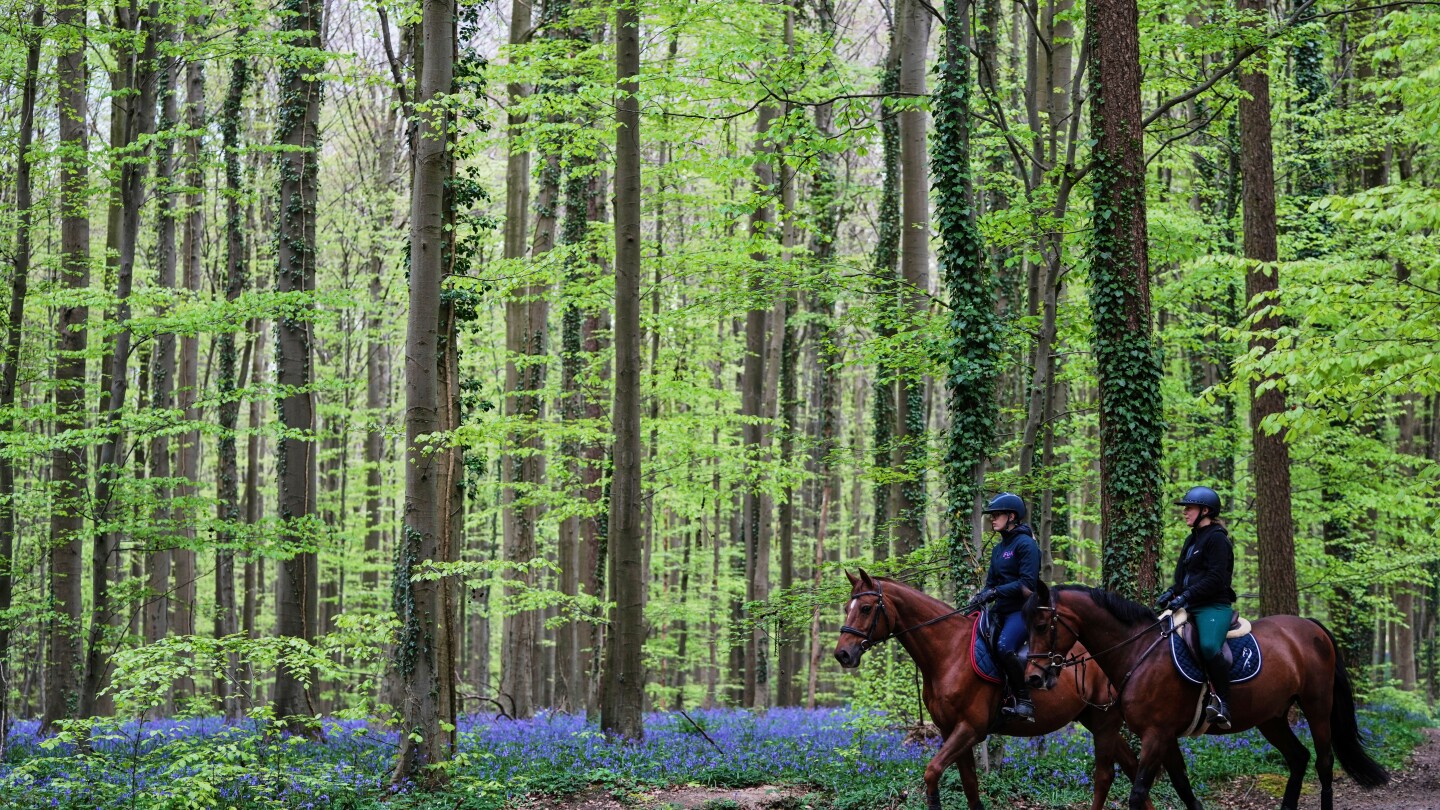
HALLE, Belgium (AP) — Gilles Gui was looking for the magical purple bluebells that raise their heads each spring under the budding beech leaves of the Hallerbos forest, an annual explosion of color that draws crowds from around the world.
And in these times full of stress and anxiety about wars, economic threats and other tensions, he found something else too: a sense of tranquility.
“I notice that there’s a lot of silence in my head when I’m done,” Gui said. “Yeah, it helps me keep some peace in my mind, really just take my mind away from everything that’s going on.”
Spending time in nature, experts have long said, can be a balm in troubled times.
“From a stroll through a city park to a day spent hiking in the wilderness, exposure to nature has been linked to a host of benefits, including improved attention, lower stress, better mood, reduced risk of psychiatric disorders, and even upticks in empathy and cooperation,” a 2020 article of the American Psychological Association said.
“These are extraordinary times,” said Ignace Glorieux, a sociology professor at Brussels University, adding that the under-30 generation in particular is under pressure.
“This is also the generation maybe that suffered most from the COVID crisis,” Glorieux said. “And now they come into a situation where there’s a lot of international uncertainty. So especially this group, maybe more than (the older) generation, is suffering from that and feels very uncertain about their future.”
Gui, 26, knows what Glorieux is talking about. “I do know of people my age who are worried and also with financial situations going on, who try to keep level heads, but it’s very hard for them,” he said.
The bluebell woods offer a ‘big green hug’
During the pandemic, the bluebell woods were closed off for fear that throngs of people would make it a hive of transmission instead of a haven of peace. Restrictions kept some parks under seal and mandated masks in some others.
“It was a difficult period for everyone,” said Mark Demesmaeker, a former member of the European Parliament, gardening enthusiast and city councilor in Halle, where he has walked the woods for decades. Now, at least, nature is there to welcome those with anxious minds.
“These bluebells — but in other times of year as well, walking here, the forest valleys, the wildlife, the forest streams — you know, they work into your mind all year round. And it’s really a big green hug that you get here,” Demesmaeker said.
That hug from nature is just about everywhere right now. Japan is awash in a sea of cherry blossoms, which mesmerize people around the world. Bluebell season also coincides with the prime tulip season in the Netherlands. The renowned Keukenhof garden there has become a playground for influencers and those seeking that ultimate selfie.
Put down the phone?
The Keukenhof and the Dutch tourism board suggest good spots to “make your image come alive.”
To Glorieux, that’s where 21st-century humans push it too far.
“We have to be busy all the time, even in our leisure time,” he said. “We have to perform.”
Instead, he advised, “Focus! If you go out walking, focus on walking. If you go out jogging, focus only on jogging.”
Such advice was not wasted on Philippe Thiry, 64, a southern Belgian recently retired and ready to embrace the rest of his life. He had no phone as he set off in the sunshine to look for bluebells.
“I don’t want to use it here because I’m here just to relax,” he said. “I mean, just to see the flowers and to see, to listen to the birds.”
“I want to be disconnected.”
Lifestyle
10 fiction and nonfiction books inspired by the Vietnam War
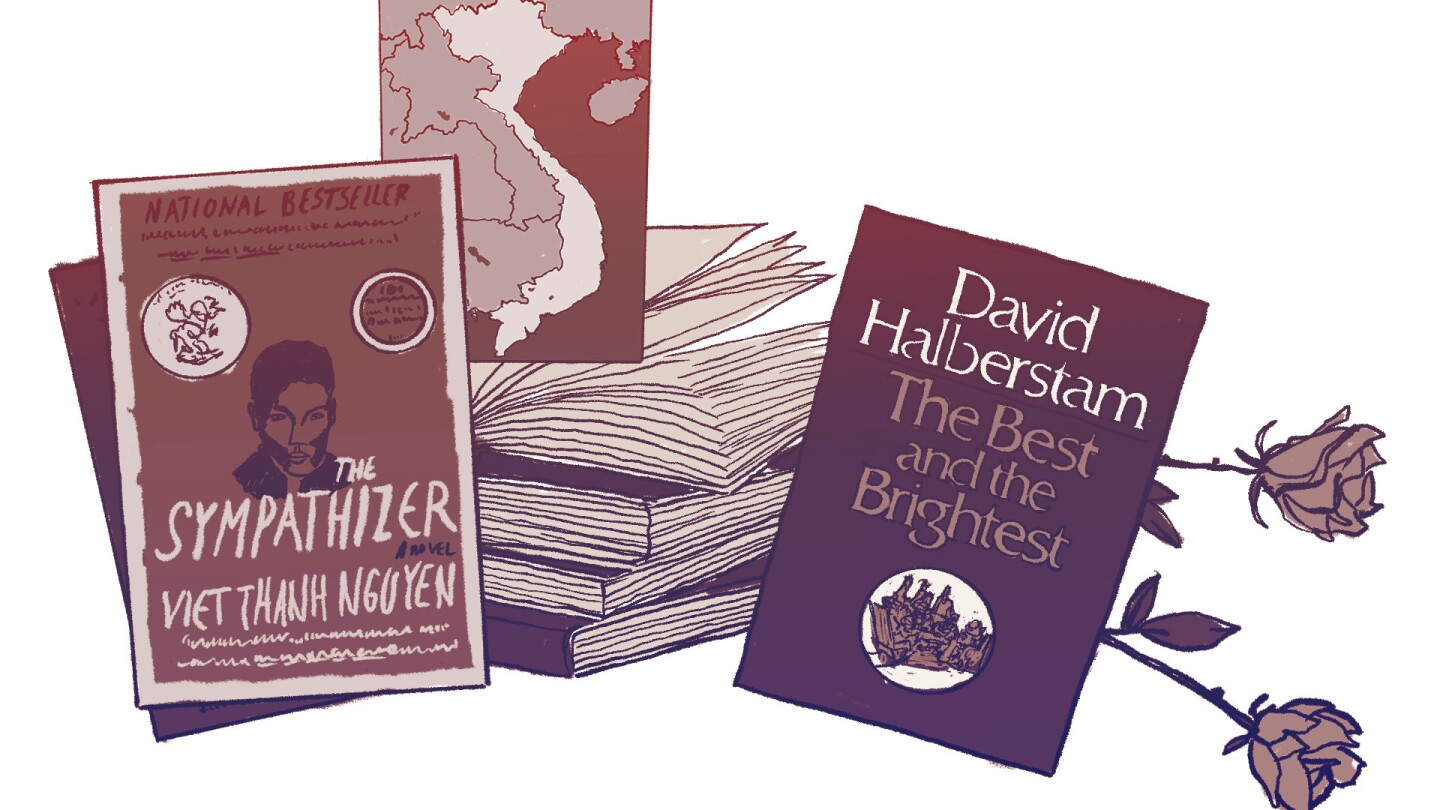
Vietnam has been called the first “television” war. But it has also inspired generations of writers who have explored its origins, its horrors, its aftermath and the innate flaws and miscalculations that drove the world’s most powerful country, the U.S., into a long, gruesome and hopeless conflict.
FICTION
“The Quiet American,” Graham Greene (1955)
This cover image released by Penguin shows “The Quiet American” by Graham Greene. (Penguin via AP)
British author Graham Greene’s novel has long held the stature of tragic prophecy. Alden Pyle is a naive CIA agent whose dreams of forging a better path for Vietnam — a “Third Force” between communism and colonialism that existed only in books — leads to senseless destruction. “The Quiet American” was released when U.S. military involvement in Vietnam was just beginning, yet anticipated the Americans’ prolonged and deadly failure to comprehend the country they claimed to be saving.
“The Things They Carried,” Tim O’Brien (1990)
This cover image released by Mariner shows “The Things They Carried” by Tim O’Brien. (Mariner via AP)
The Vietnam War was the last extended conflict waged while the U.S. still had a military draft, and the last to inspire a wide range of notable, first-hand fiction — none more celebrated or popular than O’Brien’s 1990 collection of interconnected stories. O’Brien served in an infantry unit in 1969-70, and the million-selling “The Things They Carried” has tales ranging from a soldier who wears his girlfriend’s stockings around his neck, even in battle, to the author trying to conjure the life story of a Vietnamese soldier he killed. O’Brien’s book has become standard reading about the war and inspired an exhibit at the National Veterans Art Museum in Chicago.
“Matterhorn,” Karl Marlantes (2009)
This cover image released by Grove Press shows “Matterhorn” by Karl Marlantes. (Grove Press via AP)
Karl Marlantes, a Rhodes scholar and decorated Marine commander, fictionalized his experiences in his 600-plus page novel about a recent college graduate and his fellow members of Bravo Company as they seek to retake a base near the border with Laos. Like “The Quiet American,” “Matterhorn” is, in part, the story of disillusionment, a young man’s discovery that education and privilege are no shields against enemy fire. “No strategy was perfect,” he realizes. “All choices were bad in some way.”
“The Sympathizer,” Viet Thanh Nguyen (2015)
Viet Thanh Nguyen was just 4 when his family fled Vietnam in 1975, eventually settling in San Jose, California. “The Sympathizer,” winner of the Pulitzer Prize in 2016, is Nguyen’s first book and high in the canon of Vietnamese American literature. The novel unfolds as the confessions of a onetime spy for North Vietnam who becomes a Hollywood consultant and later returns to Vietnam fighting on the opposite side. “I am a spy, a sleeper, a spook, a man of two faces,” the narrator tells us. “Perhaps not surprisingly, I am also a man of two minds.”
“The Mountains Sing,” Nguyễn Phan Quế Mai (2020)
This cover image released by Algonquin shows “The Mountains Sing” by Nguyễn Phan Quế Mai. (Algonquin via AP)
Nguyễn Phan Quế Mai was born in North Vietnam in 1973, two years before the U.S. departure, and was reared on stories of her native country’s haunted and heroic past. Her novel alternates narration between a grandmother born in 1920 and a granddaughter born 40 years later. Together, they take readers through much of 20th century Vietnam, from French colonialism and Japanese occupation to the rise of Communism and the growing and brutal American military campaign to fight it. Quế Mai dedicates the novel to various ancestors, including an uncle whose “youth the Vietnam War consumed.”
NONFICTION
“The Best and the Brightest,” David Halberstam (1972)
As a young reporter in Vietnam, David Halberstam had been among the first journalists to report candidly on the military’s failures and the government’s deceptions. The title of his bestseller became a catchphrase and the book itself a document of how the supposedly finest minds of the post-World War II generation — the elite set of advisers in the Kennedy and Johnson administrations — could so badly miscalculate the planning and execution of a war and so misunderstand the country they were fighting against.
“Fire in the Lake,” Frances FitzGerald (1972)
This cover image released by Mullholland shows “Fire in the Lake” by Frances FitzGerald. (Mullholland via AP)
Frances FitzGerald’s celebrated book was published the same year and stands with “The Best and the Brightest” as an early and prescient take on the war’s legacy. Fitzgerald had reported from South Vietnam for the Village Voice and The New Yorker, and she drew upon firsthand observations and deep research in contending that the U.S. was fatally ignorant of Vietnamese history and culture.
“Dispatches,” Michael Herr (1977)
This cover image released by Vintage shows “Dispatches” by Michael Herr. (Vintage via AP)
Michael Herr, who would eventually help write “Apocalypse Now,” was a Vietnam correspondent for Esquire who brought an off-hand, charged-up rock ‘n’ roll sensibility to his highly praised and influential book. In one “dispatch,” he tells of a soldier who “took his pills by the fistful,” uppers in one pocket and downers in another. “He told me they cooled out things just right for him,” Herr wrote, “that he could see that old jungle at night like he was looking at it through a starlight scope.”
“Bloods,” Wallace Terry (1984)
A landmark, “Bloods” was among the first books to center the experiences of Black veterans. Former Time magazine correspondent Wallace Terry compiled the oral histories of 20 Black veterans of varying backgrounds and ranks. One interviewee, Richard J. Ford III, was wounded three times and remembered being visited at the hospital by generals and other officers: “They respected you and pat you on the back. They said, ‘You brave and you courageous. You America’s finest. America’s best.’ Back in the states, the same officers that pat me on the back wouldn’t even speak to me.”
“A Bright Shining Lie,” Neil Sheehan (1988)
This cover image releasd by Vintage shows “A Bright Shining Lie” by Neil Sheehan. (Vintage via AP)
Halberstam’s sources as a reporter included Lt. Col. John Paul Vann, a U.S. adviser to South Vietnam who became a determined critic of American military leadership and eventually died in battle in 1972. Vann’s story is told in full in “A Bright Shining Lie,” by Neil Sheehan, the New York Times reporter known for breaking the story of the Pentagon Papers and how they revealed the U.S. government’s long history of deceiving the public about the war. Winner of the Pulitzer in 1989, “A Bright Shining Lie” was adapted into an HBO movie starring Bill Paxton as Vann.
___
For more coverage of the 50th anniversary of the Vietnam War’s end, visit https://apnews.com/hub/vietnam-war.
Lifestyle
Tina Knowles interview: Tracing the throughline of Beyoncé and Solange’s success

NEW YORK (AP) — Many of Tina Knowles’ fondest childhood memories are of sitting under a pecan tree as her mother recited the history of their family, stretching back generations. Now, the mother of Beyoncé and Solange has given her own story to the world with “Matriarch: A Memoir,” out this week.
“Beyoncé and Solange have been busy since they were little kids working, and Kelly (Rowland). … I’ve told them stories, but I don’t even know if they really listened,” said the 71-year-old Knowles. “When you’re young, it’s very few people that want to hear those stories about old times.”
At 59, Knowles began recording voice notes of that history — adding in her contributions — after contemplating her mortality following her divorce from Mathew Knowles after a three-decade marriage. The recordings were meant only for her grandkids and future great-grandchildren, before eventually becoming book’s foundation.
The 432-page Oprah’s Book Club selection explores a vast range of topics, including her enslaved great-grandmothers, her entrepreneurial spirit, the Houston childhoods of Beyoncé and Solange, her infidelity-plagued first marriage, Destiny’s Child’s struggle to get a record deal, and the blatant racism her family experienced navigating a segregated United States. (She was once allowed to briefly sit in the front of a whites-only bus as a child, disguised by her fair skin tone.)
But you won’t find juicy details from the protective mother; there’s no mention of the infamous 2014 Met Gala elevator incident between Jay-Z and Solange, or of Kanye West taking the mic from Taylor Swift at the 2009 MTV VMAs in his attempted defense of Beyoncé. This is Celestine Beyoncé’s story — not her children’s — still intriguing and very personal, revealing she was diagnosed with Stage 1 breast cancer last year. She had initially left it out of the book.
“I just wanted to keep it to myself … as I went through that process of getting the surgery and all of that, there were things that I felt that I needed to share,” said Knowles, who is now cancer-free after surgery and treatment, and urges women to make mammogram appointments and get second opinions.
Knowles, who next month will launch a nine-city book tour that will include conversations with famous friends like former first lady Michelle Obama and Tyler Perry (she also hints at “family” joining her at some stops), spoke with The Associated Press about receiving due credit, regrets as a parent and finding happiness. Answers have been edited for clarity and brevity.
AP: Some may have thought of you as only Destiny’s Child’s stylist or Beyoncé’s mom. Is there a desire to get due credit?
KNOWLES: I gave a lot of people credit for things — and I’m fine with that — but this is all about my truth.
I definitely feel like I was a driving force, and I can say that now without feeling like — I was taught as a kid to just be super humble and to not ever brag. … I think I’ve dimmed my light for so long, I don’t want to do it anymore.
AP: There are events involving Beyoncé or Solange that you barely mentioned — if you mentioned them at all — like the reasons surrounding Destiny’s Child’s breakup. Why exclude your perspective?
KNOWLES: I don’t think that’s important, because from that time, everyone has flourished and just moved on from that. And I just choose to focus on the positives in life. … I don’t feel like it’s a need to harp on those things. I don’t want to talk about them.
AP: In highlighting the differences between Solange and Beyoncé, you describe how Solange loved school and craved structure, and you weren’t always able to provide that as Destiny’s Child began to take off. Why be so vulnerable with your parenting mishaps? (Solange, not wanting to travel or leave friends, eventually stayed with a family friend for a period of time for consistency.)
KNOWLES: Solange has been a speaker of truth since she was little … she was the one that was in my case all the time. ’Cause she’s like, “Mom, you’re just so irresponsible when it comes to school.”
I just felt like that was healing for me to talk about it. Because people think … you’re trying to be the perfect mother, and definitely, I was screwing up just like everybody else. And so, I was really wanting to be honest about my shortcomings.
AP: Why did you mention the importance of teachers, negatively affecting your own confidence attending Catholic school, as well their impact on your daughters?
KNOWLES: Some of them can be detrimental, and I go into detail about that because I realize that a teacher telling me that Beyoncé was slow in kindergarten and that she needs to repeat the grade and it’s December — that woman could have messed up my child’s life. We wouldn’t even have a Beyoncé today if I had listened to her.
You gotta fight for your kids. I hope that lesson came through loud and clear. … That was important to me because I see a lot of parents that don’t, and my mom didn’t protect me.
AP: Have Beyoncé and Solange read the book yet?
KNOWLES: By the time I finished the book and I was ready to share it with them, both of them were on these really crazy schedules and I just didn’t want them to feel, “Oh, I got to stop and go read a book.” So, I sent them all of their parts and they approved the parts.
AP: Did they asked you to cut anything after they read their parts?
KNOWLES: No. They were in agreement with everything.
AP: What do you hope readers will take away from “Matriarch”?
KNOWLES: Your life, whatever it is, cannot just center around everyone else but you. And it took me a long time — I had to be 59 years old before I realized I deserve to be happy. And I deserve to have the things that I deserve, and not feel bad about it, not feel guilty about it.
I’m going to live my life — live my best life, as the kids say.
___
Follow Associated Press entertainment journalist Gary Gerard Hamilton at @GaryGHamilton on all his social media platforms.
-
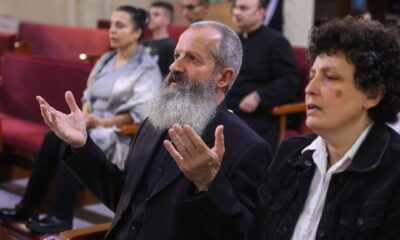
 Conflict Zones2 days ago
Conflict Zones2 days agoGaza’s Christians mourn death of Pope Francis | Israel-Palestine conflict News
-
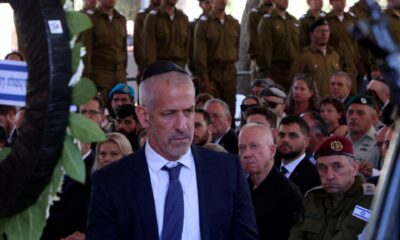
 Middle East2 days ago
Middle East2 days agoIsraeli spy chief accuses Netanyahu of demanding illegal operations | Politics News
-
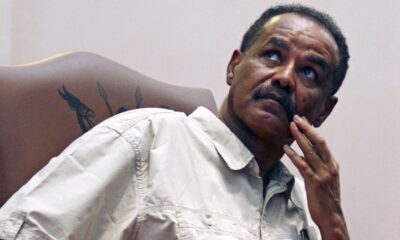
 Conflict Zones2 days ago
Conflict Zones2 days agoAway from the global spotlight, Eritreans are trapped in a garrison state | Conflict
-

 Education2 days ago
Education2 days agoSupreme Court weighs parents’ objections to LGBTQ content in elementary schools
-

 Middle East2 days ago
Middle East2 days agoNetanyahu’s survival tactics tested amid Israel Shin Bet head’s accusations | Politics News
-

 Lifestyle22 hours ago
Lifestyle22 hours agoWorries about flying seem to be taking off. Here’s how to cope with in-flight anxiety
-

 Lifestyle2 days ago
Lifestyle2 days agoWomen’s soccer star Almuth Schult says clubs didn’t want to sign a player with kids
-
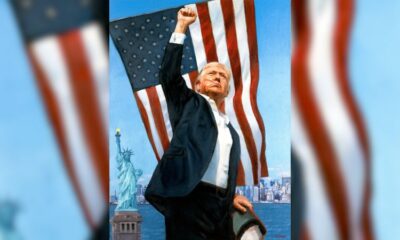
 Europe2 days ago
Europe2 days agoRussian artist reveals mystery Trump portrait he says was gifted by Putin to the US President




